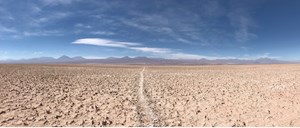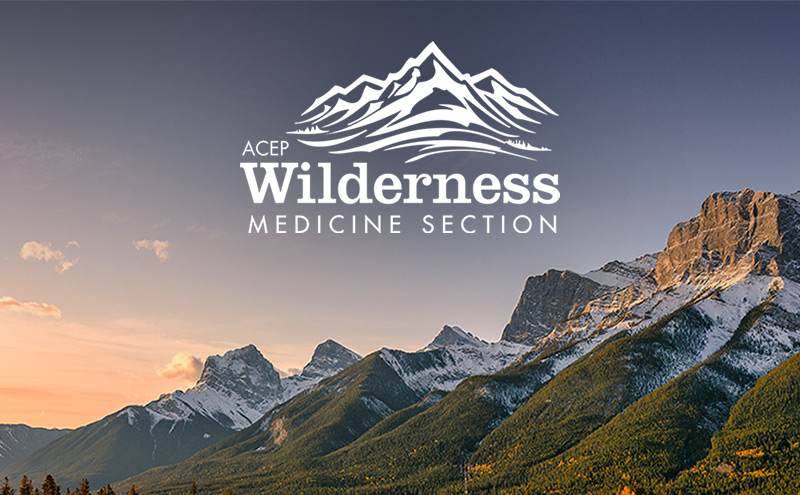
2024 ACEP Wilderness Medicine Section Survey Results
Marc Cassone, DO, FACEP
Wilderness Medicine Section Chair-Elect
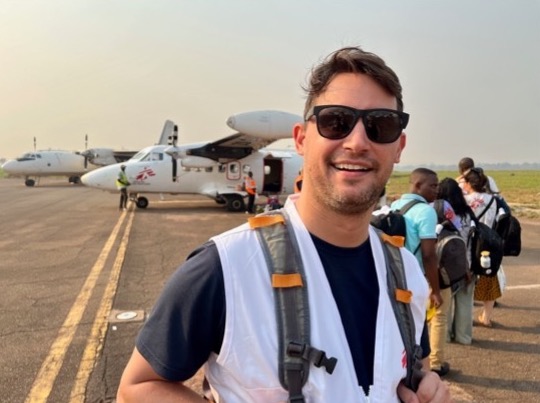
In 2024, section leaders sent a survey to members to learn more about their careers and challenges in wilderness medicine. Seventy-six members responded to our questionnaire- below are some of the big take-aways.
A Variety of Working Conditions
Beyond a general interest in wilderness medicine, respondents expressed they were most involved in general wilderness medicine education (60% of respondents) and medical student education (40%). Other domains included outdoor event medicine (25%), research (22%), medical command (20%), and ski patrol (17%).
Members practice wilderness medicine in a variety of domains. Highest areas of services provided included:
- Medical Education (59%)
- Direct Patient Care (39%)
- Consulting (39%)
- Event Medicine (33%)
- Medical Command: On-site (21%), Remote (30%)
Wilderness medicine remains a minority aspect (aka “side gig”) with most respondents spending 5% or less of their time on wilderness medicine.
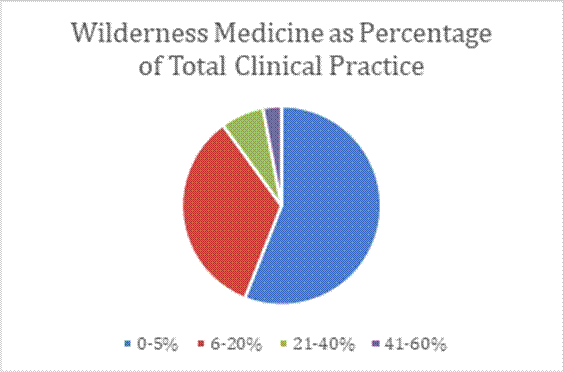
Members work in a variety of contexts (although Mountain West is highest with 25% of respondents) and involved in a variety of organizations; most notably the Wilderness Medical Society (72%), National Ski Patrol (17%), national or state parks (13%), search and rescue organizations (13%). The most commonly cited certifications include AWLS (49%), FAWM (49%), and AIRE or other avalanche training (29%).
Compensation & Coverage
Wilderness medicine remains a labor of love for respondents; many members are completely unpaid (50%) for their work in the field.
Some responses on the topic:
“Wilderness medicine is essentially an unpaid or minimally compensated specialty. It is hard to justify time in wilderness medicine when I can make far more in emergency medicine.”
“Companies that make a lot of money providing expeditions expect medical coverage to be free and sometimes even at a cost to the provider and this is a culture that must change.”
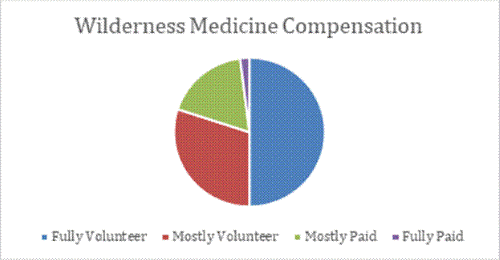
Members reported they received malpractice coverage through a variety of overlapping sources, while 33% reported they had no coverage at all.
- No Coverage: 33%
- Good Samaritan Regulations: 29%
- Society Membership: 26%
- Employer: 20%
- Private: 7%
- Other: 3%
Barriers to Practice
“The undervaluation of the provider in the austere environment is an issue. Wilderness medicine is inherently a style of medicine that needs to fall back to basics and fundamentals, with strong emphasis on stabilization and evacuation. Organizational leadership doesn't always appreciate the value of having trained providers and high-level medical resources available.”
Over half of members (56%) ranked having not enough time as the top barrier to practicing wilderness medicine. Respondents mentioned balancing other clinical duties, negotiating buy-down with their institutions, time away from family, and remote locations with long travel times as contributors to this.
Renumeration was also a barrier to practice; 25% of respondents ranked this as their top hurdle to working in wilderness medicine. Industries expectations of no compensation, extra costs of equipment and self-funded travel, and inability to afford additional malpractice coverage were some of the associated reasons members mentioned.
Lack of training opportunities was also highly ranked (10% ranked this as a top reason). On this topic, members mentioned concerns about costs and limited locations of training courses/conferences, limited shadowing and hands-on training opportunities, lack of dedicated time for longer courses, and lack of mentors.
Other barriers mentioned were location, lack of job opportunities, lack of research, and need for legitimization and wider recognition of the field.
Next Steps
While wilderness medicine remains a minority of total practice time for the majority of respondents, it is clearly work we are passionate about as most of us are either unpaid or underpaid. Members have varied careers and work in a range of settings with different responsibilities and organizations. Members have identified training opportunities, networking events, and advocacy as top areas they would benefit from. The section leaders are keen to use this data moving forward to develop programs to serve section members in the coming year- stay tuned for more to come!


